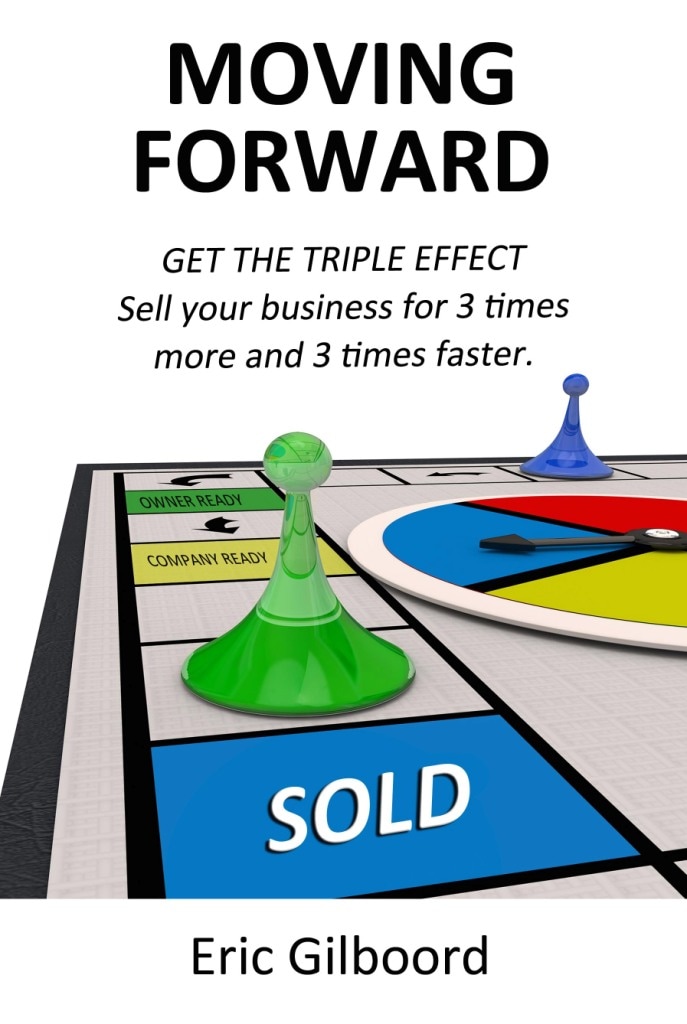
Customers are the most important component of your marketing program. You can have the best product or service and the most knowledgeable and impressive staff, but without a happy customer, you may have no one to make the sale to. No sales lead to fewer staff or at best, a less-qualified staff, leading to a downward spiral. This situation may sound like a doom and gloom prediction, but a solution is not far out of your reach.
In fact, there are many steps you can take to not only secure your relationship with existing customers but also attract and retain new ones. The old adage ‘‘Treat customers as you wish to be treated’’ has never been more relevant. Competition is fierce and small companies are stealing business from formidable competitors through solid, reliable customer service. The stigma of small companies being too small to handle customer needs is disappearing.
Large companies often hire people on contract (consultants, small suppliers, etc.) for many of the jobs that were salaried positions in the recent past. You have a better opportunity to compete with larger competitors and win new business than ever before. Great customer service can even the playing field and make all the difference in the world to your business.
Treat Customers As Well As You Like To Be Treated
Here are two very different experiences with customer service, a negative experience with a large company and a positive one with a small business.
Story 1:
A Negative Experience
A customer arrived at a bank about two minutes before it officially opened at 9:30 a.m. An older gentleman had been waiting for a few minutes and seemed somewhat agitated. Other people were waiting in their cars for the doors to open.
Time takes on new meaning when waiting and a few minutes can seem like hours; the bank had to keep the doors closed until 9:30 for security reasons. As 9:30 a.m. came and went, no one opened the doors.
An employee was spotted inside the bank and the growing crowd waved to bring him over. He thought this was amusing and waved back as he continued going about his business. The agitation among the customers increased. The waving employee finally let the customers in.
It seems he found the furious, waving exchange humorous and greeted them with a big smile as if it were a joke. The crowd did not laugh. As the customers approached the tellers, it became apparent that they would have to wait again. The customers were not happy.
This bank was a new, large branch that had amalgamated from several smaller ones. It was supposed to offer state-of-the-art service. This was not the first negative experience for any of these customers. As they waited for a teller, stories of prior bad experiences began to circulate among them, each story outdoing the previous one.
Occasional service problems can be tolerated. An ongoing disregard for your customers cannot. As the old expression goes, ‘‘The customer is always right.’’ Unfortunately, some businesses seem to ignore this advice and they drive customers away. The banks’ problems could be easily fixed with extended hours and more staff. Good service begets more business and more business pays for extended hours and increased staffing. The cycle continues and your business grows.
Story 2:
A Great Experience
A businessman set out to buy a new suit. A store had been recommended to him through word of mouth. He approached the front door and noticed a sign asking him to press the buzzer. Before he could count to three, a friendly salesman opened the door and welcomed him inside.
The first question the salesman asked was how had he heard about the store? After receiving the answer, the salesman dispensed with the formalities and asked the businessman how he could help him.
The customer described the occasion he needed a new suit for and the salesman took over. The next hour was probably the easiest and most enjoyable shopping experience the businessman ever had.
The salesman described the construction of various suits and explained the differences between manufacturers and styles. He made good recommendations and coordinated shirts and ties to make several outfits from one suit. He made the purchase very easy and an enjoyable experience for the customer.
It was obvious why the business had been built on word-of-mouth, and the businessman planned to pass its name on to other people. The salesman turned a new customer experience into a long-term relationship.
Successful businesses know how critical customer service is. In a highly competitive marketplace in which many companies offer similar products and services, a great way to distinguish yourself is by offering superb customer service. It is imperative to understand what your customer is really looking for.
Customers don’t think very differently than you do. When you are buying products or services for your business or home, you are a customer. Your thinking is probably like your customer’s. Next time you are purchasing something, keep the following points in mind and look at the purchase from a customer’s perspective. It’s not difficult to learn something from one industry and transfer the information to another. Try to relate what you learned to your own business.
“Confidence is key to successfully acquiring new business.” A2E
13 Tips for Outstanding Customer Service:
- Make The Experience Easy And Enjoyable. Make the entire interaction a simple and pleasant experience for your customer. Do not present reasons for someone to not do business with you. If you don’t have a product in stock, get it. If you are not normally open at a certain time, extend your hours. When you do extend your hours, let everyone know about it through a mailer, telephone calls to regular customers, social media, on your website, signs in your window, and any other form of customer communication you are currently using. Not every announcement requires an advertising campaign.
- Anticipate Needs. Ask your customers questions and look for opportunities to satisfy needs they did not realize they had. Present options beyond what the customer is asking for. Sometimes, a customer is unaware of all their needs.
- Clarify Requirements. Be clear about your customers’ requirements. There should be no confusion as to what they are looking for and what is expected of you. If a customer asks for something you feel is not the best choice for him or her, provide that product or service, but also give your recommendation. Explain the reasons for your preference. Make sure the product or service you recommend exceeds his or her expectations. As a supplier, you know from experience whether or not you’re going to meet or exceed a customer’s needs. The ability to satisfy them is in your hands. If the customer’s expectations are unrealistic, you will probably fail to produce a happy customer. “We want happy customers, right.” A2E
- Be Flexible. Be flexible and prepared to customize your product or service to fit a customer’s unique needs. Each customer has his or her own set of requirements. He or she may need something to be longer, heavier, quicker, or less expensive than what you normally offer. Your goal is to satisfy him or her. Make sure they know you customized the product or service. Customizing often requires little effort from the supplier but can make a world of difference to the customer. Remember, you know your product better than the customer does. What you may take for granted could be the difference between night and day as to how the customer uses your product. Sometimes, a simple adjustment can make a huge difference.
- Make No Room For Surprises. Most customers don’t expect more than delivery of what you promise when you promise it and at the price you promised it for.
- Provide A Reward. As a customer, you’d like products or services to cost less, even if they’re priced properly. Everyone wants a deal and in a world of discount outlet malls, big box mega stores, and sales for every conceivable holiday, customers expect prices to be lowered or extras to be thrown in. Customers like to receive a bonus, an indication of appreciation for their business. Offer something extra for free. Free is much more appealing than a discount. Simple, and straightforward.
- Be Interested. Take a genuine interest in your customers. Make a personal comment or observation on their purchases. Your customers are not merely customers; they are complex human beings with the same emotional needs that you have.
- Satisfy Your Customer. Customer satisfaction is an ongoing quest. You should be constantly on the lookout, within your business and outside, for new ways to satisfy a customer’s basic needs. Every day you are given the extraordinary opportunity to learn what to do and what not to do. All customers want purchases and interactions with suppliers and staff to be simple. Keep your eyes and ears open and relate the information to your business. Don’t forget to share it with fellow employees in weekly staff meetings.
- Be Quick. Speed is of the utmost importance today. Making a purchase faster, or even better, walking out of the store with a purchase, is the goal of many shoppers. Purchases that are not usually made on impulse can become required purchases as soon as the customer has made the decision to make them. We live in an ‘‘I want it now’’ world.
- Make It Convenient. To purchase your product or service. If it is too large (an elephant), dirty (top soil), or difficult (panes of glass), a customer may need a special truck to transport it. Delivery would make a customer’s life easier. Arranging the delivery should not be the customer’s responsibility, nor should it involve another purchase decision from another supplier. Cover these common additional requirements by prearranging services and add-ons with suppliers you have approved. A new customer and an unapproved third-party supplier is a recipe for disaster.
- Decrease Their Work. Take the work out of using your product. Who wouldn’t prefer something to come pre-assembled and ready to run? Customers want enjoyment from a purchase. They want their lives to be easier —that means less work, not more. Keep instructions to a minimum or eliminate them. Bikes, furniture, and toys fall into this category. As a supplier, you are much better equipped than the customer to assemble and prepare a product for use. You do not want a customer coming back to your store with a half-assembled bike or toy and parts.
- Be Alert To Product Changes. Reusable products should be consistently and automatically replenished or replaced. Online or offline technology-based products or services like computers and software should be updated or upgraded as new features become available. Develop a database and contact customers before these changes come onto the market. The upgrade to the product should come from the supplier. You want to be the first to receive information that any new products or services are available, even before you need or want them. There is nothing better than a happy customer who finds out that for little or no effort he or she can be even happier.
- Accept Returns. Accept returns as part of the normal business process. If a customer is not happy after giving the product or service a fair chance, take it back. Be prepared to offer a no-hassle return policy. If customers have a difficult time returning a purchase, they may resent your company and could let others know how they feel. On the other hand, many customers will go out of their way to let friends know about a positive experience, even if it ended in the return of a product. The person that a customer is telling the story to may be a prospect who has more extensive needs than the original customer did.








